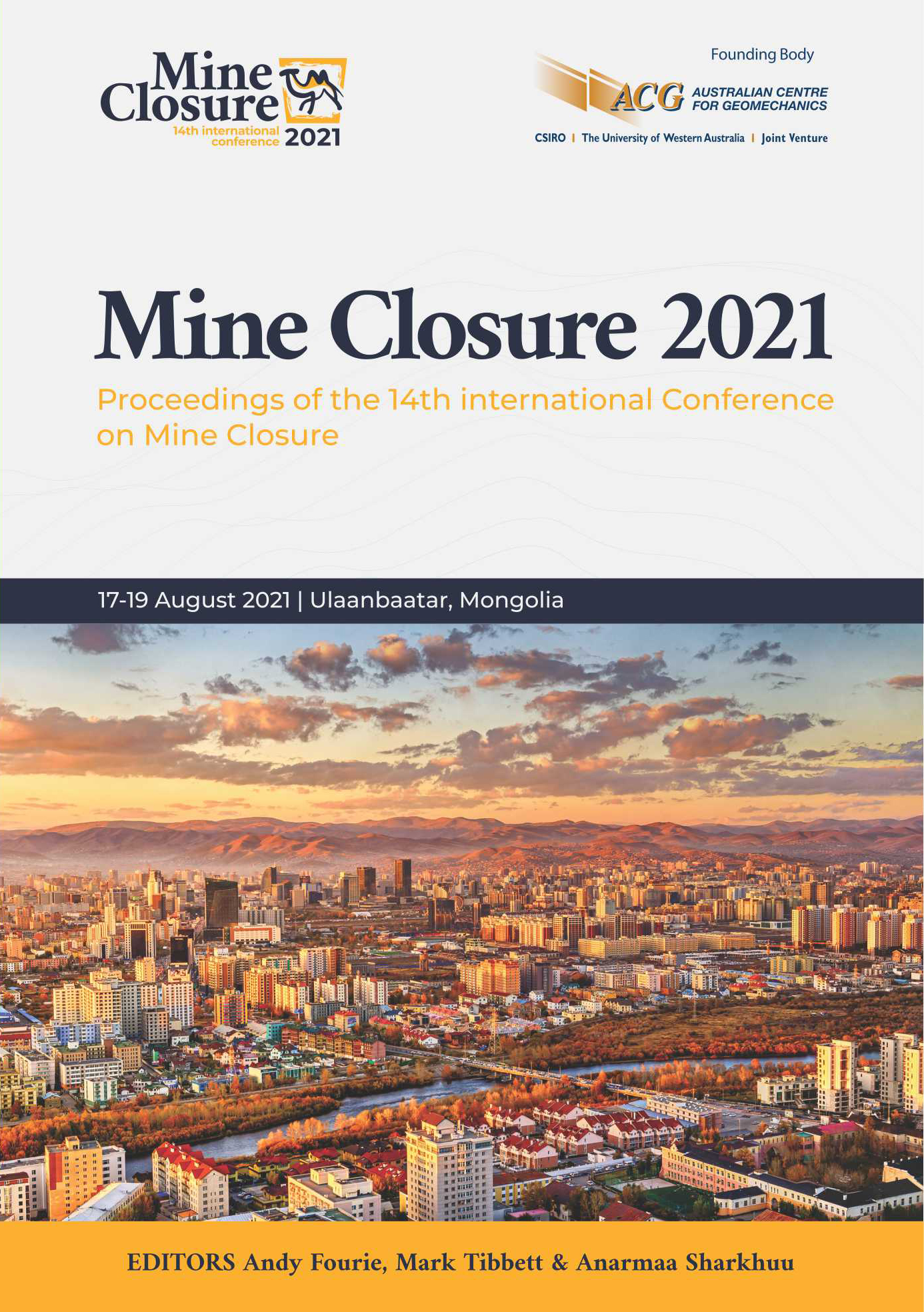Knowledge makes the work go round: Knowledge management in mine closure planning

|
Authors: Tones, A; Howe, L; du Plooy, J |
DOI https://doi.org/10.36487/ACG_repo/2152_06
Cite As:
Tones, A, Howe, L & du Plooy, J 2021, 'Knowledge makes the work go round: Knowledge management in mine closure planning', in AB Fourie, M Tibbett & A Sharkuu (eds), Mine Closure 2021: Proceedings of the 14th International Conference on Mine Closure, QMC Group, Ulaanbaatar, https://doi.org/10.36487/ACG_repo/2152_06
Abstract:
The importance of knowledge and data management from mine inception to cessation and beyond is thought to be well documented and understood. However, significant data gaps, inconsistent or unstructured approaches to data management and conflicting operational needs continue to present challenges in mine closure and the closure plan development processes. Gaps in site knowledge, monitoring data or an environmental database which isn’t integrated or connected to site operations/ design processes, have the potential to lead to increased closure related costs and ultimately ineffective closure. Knowledge gaps may also introduce delays during the tenement surrender and relinquishment process, while the tenement holder and the Regulatory agencies establish a common understanding on the level of detail required to be provided in the Closure Plan, as well as the supporting evidence demonstrating achievement of completion criteria. While each mine site has its own specific data requirements, data collected on sites commonly relate to the achievement of approval being sought or for demonstration of compliance with environmental licence conditions rather than demonstrating long term trends against closure objectives. This is applicable to all scales of mining and mine life stages. Establishing a vision for closure and realistic closure objectives early in the life cycle of the mine and having an evidence base derived from measured data that supports the closure vision and objectives can provide long term confidence to key stakeholders such as mine owner, regulator, technical specialists and future landowner. Mine closure planning and documentation are recognised as having a higher level of effectiveness and practicality when supported by knowledge and data collected as part of an integrated site system, rather than a standalone process. The challenge is to recognise how the existing knowledge and data base can be optimised to support closure planning and refinement (if not already developed) of closure objectives and criteria. Tried and tested methods for improvement start with evaluating a site’s current knowledge and data base against closure needs. Following this, the state of the data will influence the process taken to breach any recognised gaps and in turn determine the process or approach to closure planning. Undertaking a gap analysis with respect to state rehabilitation and closure plan legislative frameworks also provides an opportunity to identify areas of development, improvement and alignment with existing site processes. Regardless of operational status, identifying gaps in the environmental knowledge and data base can lead to improvements in the approach to knowledge and data collection throughout the life of the asset, which in turn can minimise the closure financial liability and potential reputation impacts from sub optimal closure outcomes.
References:
Cooper, S 2019, ‘Maximising post mining land use: Queensland Government reforms’ in in AB Fourie & M Tibbett (eds), Proceedings of the Thirteenth International Conference on Mine Closure, Australian Centre for Geomechanics, Perth.
Lacy, HWB 2019, ‘Mine landforms in Western Australia from dump to landform design: review, reflect and future direction’ in AB Fourie & M Tibbett (eds), Proceedings of the Thirteenth International Conference on Mine Closure, Australian Centre for Geomechanics, Perth.
McCullough, CD, Marchand, G & Unseld J 2013, Mine Closure of pit lakes as terminal sinks: Best available practices when options are limited?, Mine Water Environ vol. 32 pp. 302–313
McCullough, CD, Harvey, B, Unger, CJ, Winchester, S, McCarthy, B & Coetzee, J, 2018, ‘From start to finish – a perspective on improving sustainable development aspects of life-of-mine practices’ in From start to finish: a life-of-mine perspective, AusIMM Spectrum Series 24.
Nichol, OG, 2005, ACARP Project No.C13048, Development of Rehabilitation Completion Criteria for Native Ecosystems Establishment on Coal Mines in the Hunter Valley, Australian Centre for Minerals Extension and Research, Kenmore.
Worboys, GL, Lockwood, M & De Lacy, T 2005, Protected Area Management, Principles and Practice, Oxford University Press, South Melbourne.
Zillig, LJK, Keenan, N & Robert, T 2015, Mining Rehabilitation in New South Wales (Australia) and Germany, Journal of Earth Science and Engineering, vol. 5, pp. 499-511
© Copyright 2026, Australian Centre for Geomechanics (ACG), The University of Western Australia. All rights reserved.
View copyright/legal information
Please direct any queries or error reports to repository-acg@uwa.edu.au
View copyright/legal information
Please direct any queries or error reports to repository-acg@uwa.edu.au
